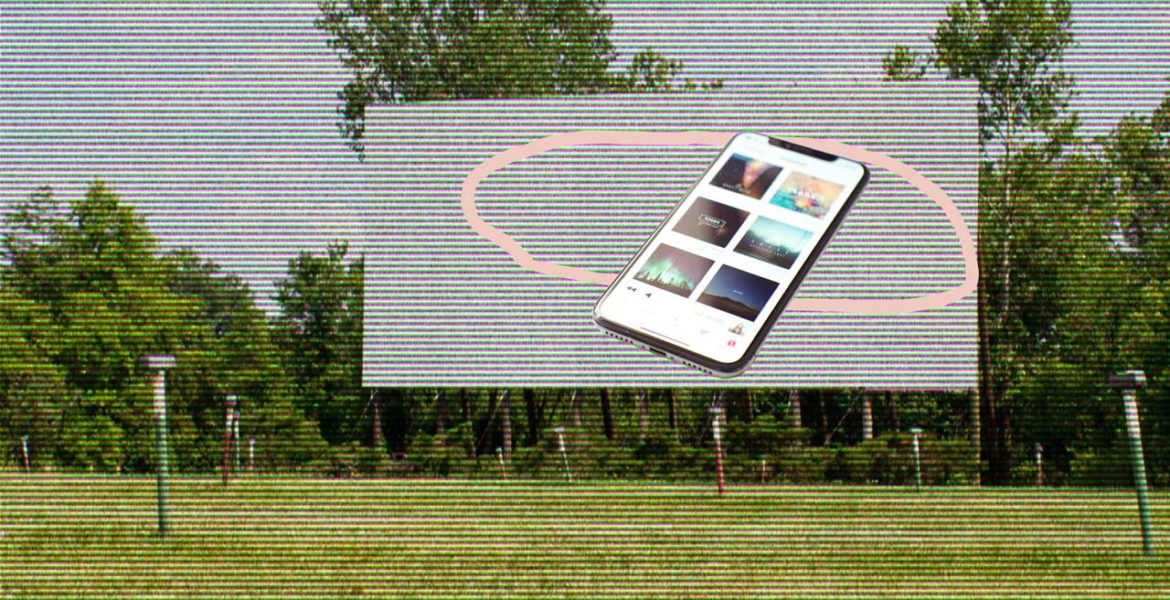Article Takeaways:
- Mobile is gaining on in-store sales. Particularly in the realm of big-box retail.
- App visibility strategies are suggested below.
- Many retailers viewed their apps as a tool that allowed consumers to research products prior to going to a store. If that’s how you view your app, it’s time to change.
Big Box stores have an inherent advantage in advertising: their prominent location in prime real estate. The very act of passing one on the way to work is a reminder that they exist, and, conveniently offer everything we may need at any given time. Depending on where you live and work, you pass multiple locations, which amplifies their advertising advantage.
Despite this notable benefit, big-box retailers are losing ground to mobile shoppers (although many are clawing back lost sales by allowing customers to buy online and pick up in-store).
Still, mobile is gaining on in-store sales, and one need not look any further than this past holiday season for proof. Mobile spending was up 68%, accounting for 45% of Thanksgiving sales and 14% of total retail.
In my office, this came as no surprise. Over the past few years, we’ve seen more and more consumers shop predominantly via their mobile devices. They opt into a brand’s email newsletter, which they read on their mobile devices, and if they want to buy a product, they convert right then and there. This trend will only grow as more people, especially Millennials and Gen-Z, rely solely on their mobiles when they’re home because they view computers as work devices.
But the mobile screen presents unique challenges to online retailers who want to attract new customers to their brand, as well as existing ones who have yet to sign up for their email notifications). Most notably: how to get into the consumer’s field of vision? Or put another way, how do you remind a customer that you’re a great place to shop when they need to swipe their screens multiple times before they finally see your app on their smartphone?
I think app visibility — mimicking the big box store’s inherent prime real estate advantage — will be a big focus in 2020 for retailers who want to capture more of the mobile shopper’s wallet. Here are some strategies for making that happen.
Make your app an indispensable component of your mobile ad campaigns
Although deep linking has been around for at least five years, I think this year it will be more widely used. Deep linking funnels users from, say, a banner ad, directly into your app via a uniform resource identifier (URI). The URI allows mobile app developers to push the user to a specific product page within an application so the user doesn’t need to navigate toward it. Of course, this only works if the consumer already has your app installed, but it’s a great way to push users deep into the consideration process.
Deep linking offers a lot of advantages that make it ready for prime time, as it is. Today’s mobile apps provide a more seamless shopping experience than they did five years ago. Just look at how the Nordstrom app has morphed into a frictionless shopping experience over the past 12 months. Thanks to these efforts, users no longer view apps as a clunkier version of shopping via a computer.
Once the user is in your app you can take any number of upselling and cross-selling strategies, just as big box stores do. You may drive to Costco because you need a pair of shoes, but while you’re there you might as well pick up groceries for the week, and beer for your upcoming party. It’s the same phenomenon with your mobile app.
What deep linking won’t do is install or update your app on the user’s device, which means it won’t eliminate the need for costly UA campaigns, though I think it would be ideal if the industry found a way to overcome this challenge. App developers spend a lot of money getting people to the app store, which is why it’s so frustrating when they abandon an install.
Personalize the consumer’s highway
In the early days of programmatic, visionaries liked to paint a picture of the consumer’s entire world customized to them, including the billboards they pass on their way to work. That’s not really practical in the offline world, but it is in the mobile one. By combining deep linking with tried and true marketing tactics, like retargeting, you can begin to personalize the consumer’s mobile highway.
Take advantage of industry momentum
As I mentioned earlier, retailers have made significant advances to their mobile apps, and that benefits all retailers who have an app because it teaches the customer that the channel is the most convenient and frictionless way to shop. The more positive experiences they have, the more open they are to installing additional retailer apps. This is really a case of a rising tide that floats all boats.
Make sure your app is optimized for shopping
Until the past few years, many retailers viewed their apps as a tool that allowed consumers to research products prior to going to a store. If that’s how you view your app, it’s time to change. Your app needs to be optimized for frictionless shopping, with streamlined purchasing workflows and integration with payment options like Venmo, PayPal and Amazon Pay that have the user’s shipping address already stored. The best apps today let users zoom in on products, and indicate if an item is in stock, can be picked up at a store as well as the outlet with the item in stock that’s closest to them.
The consumer’s attention is now on mobile shopping, and you need to grab a piece of prime real estate. These tactics will allow you to create a digital billboard for your app, only one that is personalized to each consumer.

